(please read/download pdf guides and get app links at the bottom of this page)
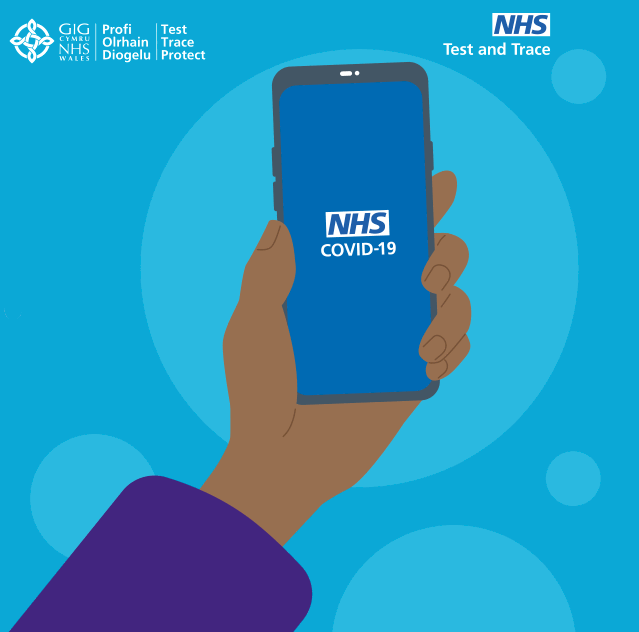
Introducing
the NHS
COVID-19 app
All of the information and images in this document are correct as of 24th September 2020. For more information on the NHS COVID-19 app visit www.covid19.nhs.uk

Supporting the national effort
How the app will help in the fight against the pandemic
The NHS COVID-19 app is part of our large scale coronavirus (COVID-19) testing and contact tracing programme called the NHS Test and Trace service in England and the NHS Wales Test, Trace, Protect service in Wales. The app will be used, alongside traditional contact tracing, to help notify users if they have come into contact with someone who tests positive for coronavirus.
The app allows people to report symptoms, order a coronavirus test, check in to venues by scanning a QR code and it helps the NHS trace individuals that have coronavirus. National effort NHS COVID-19 app Contact tracing Virus testing
The app will help the NHS understand if the virus is spreading in a particular area, and so local authorities can respond quickly to stop it spreading further and save lives.
The app does this while protecting a user’s anonymity. Nobody, including the government, will know who or where a particular user is.
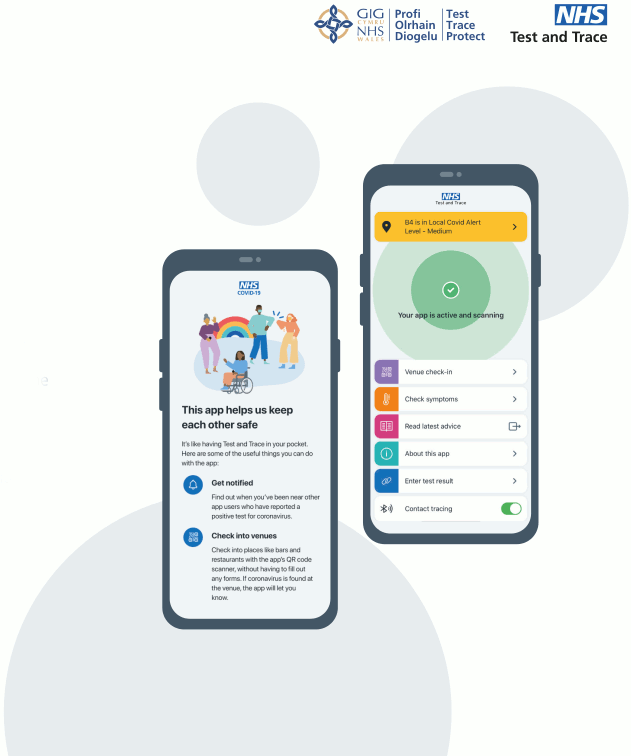
NHS COVID-19 app
Protect your loved ones
The importance of the app
Every person who downloads the app will be helping in the fight against coronavirus (COVID-19).
The app will help the NHS understand where and how quickly the virus is spreading, so it can respond quickly and effectively. The app helps the NHS rack the virus, not individuals.
App data
The app will not track you or your location. Instead your postcode district helps the app work out where the virus is spreading.
Your postcode district is the first part of your postcode, which is common to about 8,000 other households. When you first download the app, you will be asked for your postcode district.
Benefits of app contact tracing
The app helps trace app users who have spent time near other app users, who they may not personally know, and who later test positive for coronavirus.
The “Check-in” feature supports this functionality by anonymously alerting users who have been at the same venue at the same time.
App contact tracing reduces the time it takes to alert those who you have been in close contact with.
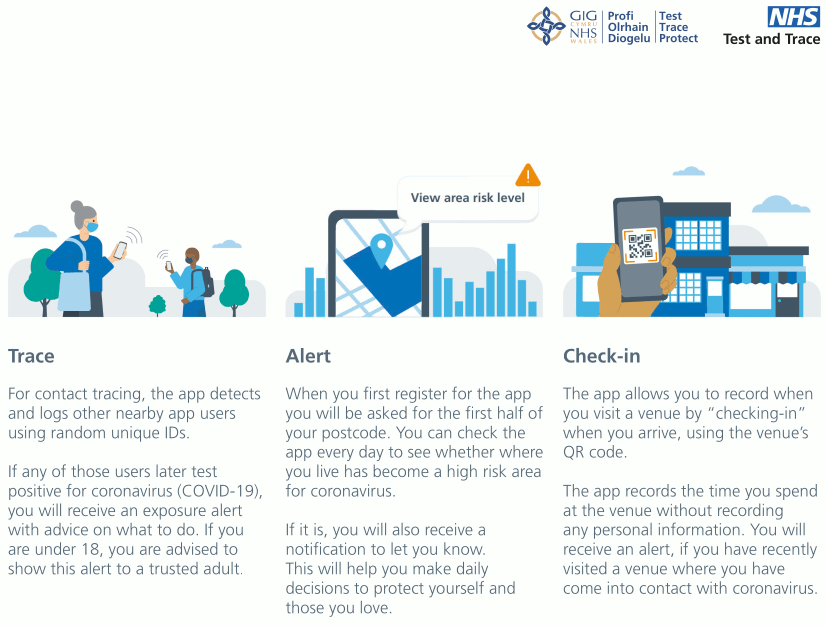
How the app supports you
The app has key features that will provide you maximum
freedom and minimum risk
If you choose to download the app, there are six key features that will help you and your community.
They will help to reduce your personal risk and the public’s risk too.
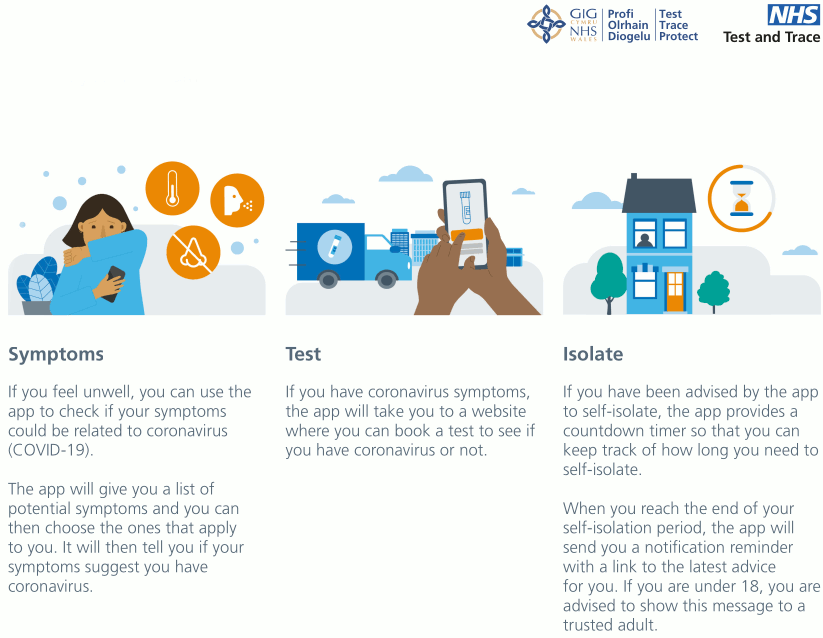
How the app supports you
The app has key features that will provide you maximum
freedom and minimum risk
If you choose to download the app, there are six key features that will help you and your community.
They will help to reduce your personal risk and the public’s risk too.
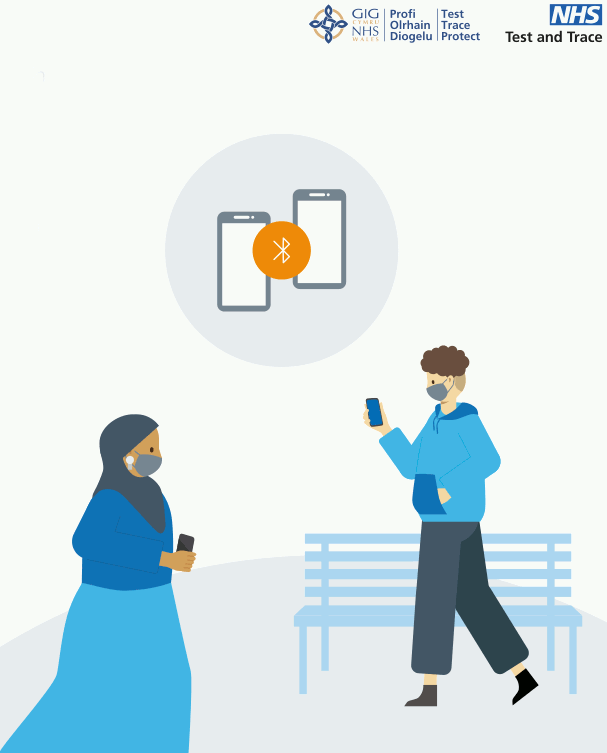
How the app works
Partnering with Google and Apple to create an app that helps in the fight against coronavirus
The app technology
The NHS COVID-19 app uses your smartphone’s existing “Exposure Logging” feature to work out if you have spent time near other app users who have tested positive for coronavirus (COVID-19).
For this to work, your Bluetooth needs to be turned on: this will not drain your battery as the app uses “Bluetooth Low Energy”.
Alerting others
An app user who tests positive for coronavirus can choose if they want other app users to be alerted. A random unique ID will then be used to alert other app users who were in close contact with that person. This ensures that the positive user’s privacy and identity is protected.
In this together
Every additional contact that the app traces will improve our existing contact tracing service and helpstop the spread of coronavirus.
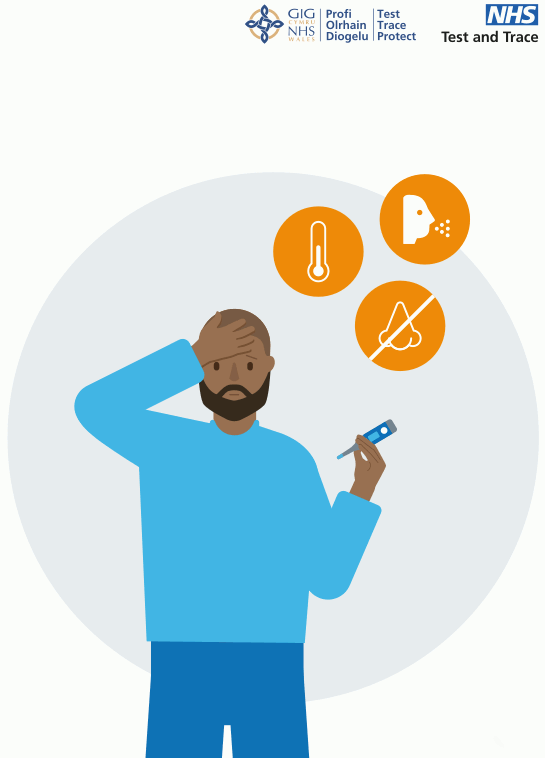
What to do if I have symptoms?
You can use the app to check if your symptoms mean that you
should be tested
If you feel unwell, you should use the app to check if your symptoms could be related to coronavirus (COVID-19).
How do I enter my symptoms into the app?
You can enter your symptoms into the app by tapping the “Report Symptoms” button. The app will give you a list of potential symptoms and you can then choose the ones that apply to you.
What happens after I have entered my symptoms?
When you have answered the questions, you can check them before you submit this information to the app.
The app will then tell you if your symptoms could be caused by coronavirus and will provide a link to the website where you can book a free test. If you are under 18, you are advised to show this message to a trusted adult.
Until you receive your test results, please follow the app’s guidance on self-isolation.
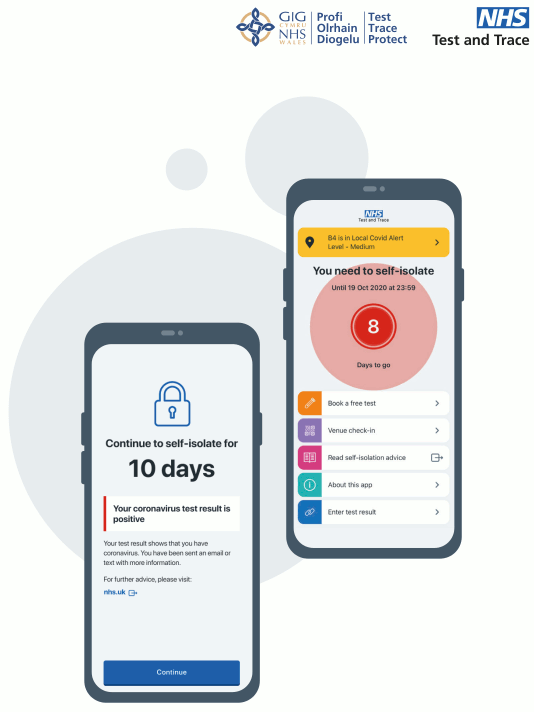
Positive test result
Easy access to your test results and advice on what to do next
What happens if I have a positive test result?
If you test positive for coronavirus (COVID-19), the app will tell you to self-isolate. If you are under 18, you are advised to show the alert to a trusted adult. It is really important that you stay at home during this time. The app will help you keep track of your isolation period with a countdown timer showing you how much longer you need to keep self-isolating. The app will also provide links to advice from the NHS on coronavirus and on what to do if you feel unwell.
What does my positive test result mean for other members of the public?
If you test positive for coronavirus, then you can choose if you want other app users to be alerted. If you decide to send alerts, NHS doctors and scientists use an algorithm to work out how close you need to be to someone with the virus, to be at risk.
A random unique ID will then be used to anonymously alert other app users who you were in close contact with on the days before you developed symptoms. No personal details about you are revealed with this alert and your privacy and identity are always protected.
App users receiving this alert will be given official NHS advice on what to do next. You may also be contacted by the NHS Test and Trace service in England and the NHS Wales Test, Trace, Protect service in Wales and asked to complete a form about who you know you’ve been in contact with recently.
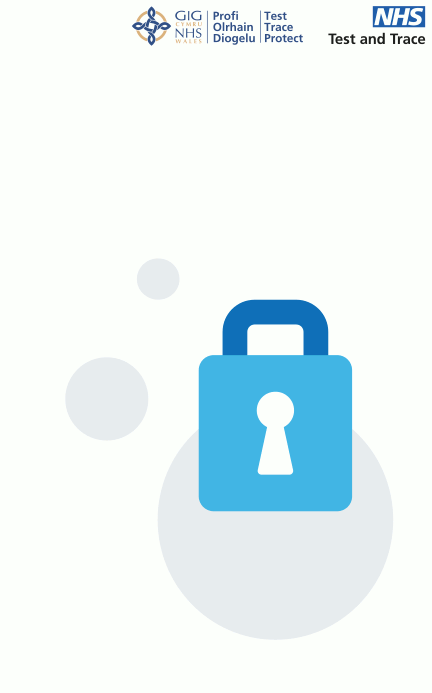
Your personal privacy and data
How privacy and data are protected
Protecting your privacy and identity
The NHS will securely send data to your phone. For example, this data might be information about a change in risk level for your postcode district. This data is used to alert you if you are at risk of getting coronavirus (COVID-19) from other app users who have been near you.
The app uses random unique IDs to detect other NHS COVID-19 app users so that alerts can be sent. Using these random IDs means that your interactions with other app users remain private.
All records, such as date, time and how near you are to other users, are stored on your phone only. You can also delete the app and all the data it stores, whenever you choose.
Your data is safe and secure
The app will not hold any personal information about you or track your location.
The app cannot be used:
• to identify you
• to track you
• to check if you are self-isolating
• by law enforcement
Experts from the Government, Apple, Google and industry have helped to design, test and improve the app.
The National Cyber Security Centre also checks that the app is safe and secure to use.
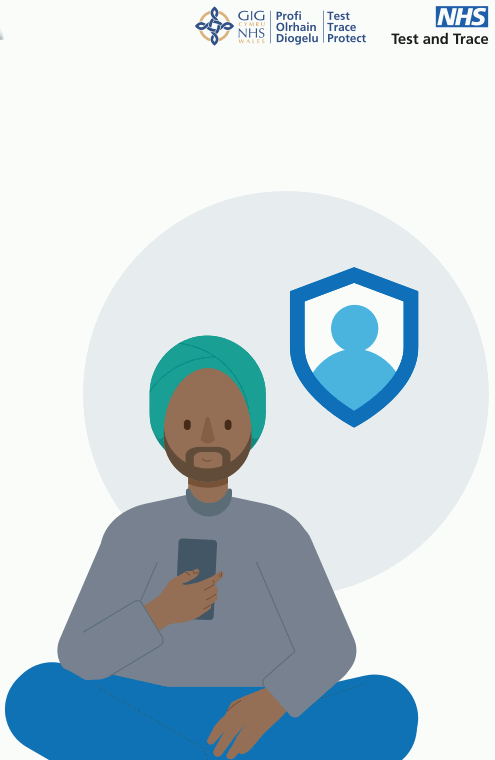
Your personal privacy and data
The app is developed with your privacy and security in mind
Can the app see my phone contacts?
No. The app does not have access to your phone contacts or any other personal information held on your phone. This includes your name, contacts, email addresses or phone numbers, or the specific details ofyour phone.
Your privacy and identity are secure.
More information about data and privacy can be found at www.covid19.nhs.uk.
What data is logged with Check-in” feature?
When you check into a venue, data will be held on your phone. This includes the time and date of your check-in and an identifier for the venue.
The app will automatically delete your list of check-ins every 21 days, but you can also choose to delete this list whenever you want.
If other people were at the same venue at a similar time to you, and later test positive for coronavirus, you may receive an alert to let you know.
Common questions
What does the random unique ID used for contact tracing look like?
The random unique IDs are codes made up of letters and numbers. These are shared between phones and they change every 15 to 20 minutes. They cannot be used to identify users or their phones.
Why does the app need my postcode district?
When you download the app you will be asked to submit a postcode district. This means that the first part of your postcode is shared with the NHS.
A postcode district generally contains about 8,000 addresses, which means that your specific location cannot be identified.
The app will use your postcode district to tell you if the area is at risk.
The NHS will use the postcode district to:
• predict and manage local hospital services
• improve the app and make sure it is working
Can I identify an app user who has tested positive for coronavirus (COVID-19)?
No. The app does not allow you to identify any app users that test positive for coronavirus. Random unique IDs are used to make sure that the identity and privacy of anyone using the app is protected. However, users are advised to keep their phone secure as alerts on the app will be visible to those who can access your phone.
Can I delete the app?
You will always be able to delete the app whenever you want. Some data remains, as determined by your phone’s operating system, but the app and the data it contains is deleted. Once you have deleted the app you will no longer receive notifications or alerts.
Will the app work if my phone is locked?
The app will work while your phone is locked, as long as the phone is switched on and Bluetooth is enabled. An exception to this is if you have just restarted your phone, you must first unlock the phone to trigger the app to start working. This is only required on restart and you don’t need to open the app.
Why do I need to turn on notifications?
Notifications are used for certain features of the app to work, such as contact tracing. If you have spent time near another app user who later tests positive for coronavirus, your phone will use notifications to send you an alert Please turn on notifications if you are are asked to do so.
Will the app drain my battery?
The app uses “Bluetooth Low Energy” and will have minimal impact on your mobile phone battery, especially if you normally have Bluetooth enabled.
Do you need Bluetooth for the app to work?
Yes. The app uses “Bluetooth Low Energy” to work. When you download the app, you will need to allow the “Exposure Notifications” service from Apple and Google.
This is because Bluetooth allows your app to record the random IDs of other app users who have spent time near you. This is known as “Exposure Logging“ and this technology makes contact tracing work as long as your phone’s Bluetooth remains switched on.
When and why do I need to check into a venue?
If you enter a venue (for example, a shop, a restaurant or a salon) that has an official QR poster at the entrance, you should scan the QR code using the camera through your app.
You will be prompted with a message to give your permission before it is used.
You will then receive an alert, if you have recently visited a venue where you have come into contact with coronavirus (COVID-19).
Why do I need to update my phone’s operating system?
In order for the NHS COVID-19 app to work, you will need the latest version of your phone’s operating system installed.
For Apple phones, you will need versions 13.5 or higher. Android phones will need Marshmallow or version 6.0 or higher.
For guidance on other phones and instructions on how to upgrade your operating system, go to “Common Questions” on the website at: www.covid19.nhs.uk.
Please find more information in pdf guides to read/download here:
1 How to setup Alerts and Notification in your smartphone.pdf
2 NHS COVID-19 app how to download Android phone.pdf
3 NHS COVID-19 app how to download iOS phone.pdf
4 NHS COVID-19 app Fact sheet.pdf
5 NHS COVID-19 app features.pdf
6 NHS COVID-19 app find out more.pdf
7 NHS COVID-19 app storing your phone.pdf
8 NHS COVID-19 app your privacy protected.pdf
9 NHS COVID-19 app how to use QR codes to check into a venue.pdf
10 NHS COVID-19 app how to create a QR poster for your venue.pdf
For more information please visit: www.covid19.nhs.uk
To download NHS COVID-19 app click here:


